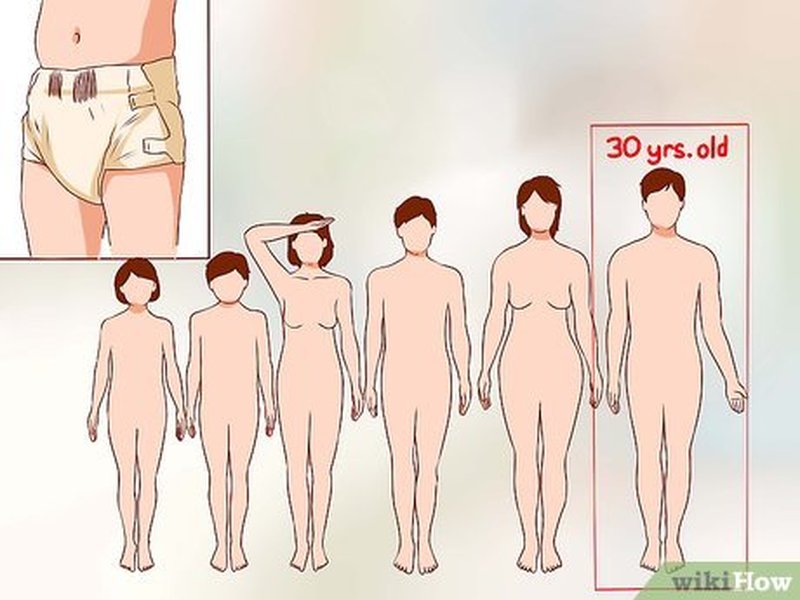
Unpacking Diaper Domination: Exploring Power, Play, and Psychology
Delving into the dynamics of control, care, and regression associated with diaper use in adult contexts.
Highlights
- Power Exchange Core: Diaper domination fundamentally involves a consensual exchange of power, where one partner assumes control (Dominant/Caretaker) and the other yields it (Submissive/Little), often using diapers as a tool or symbol within the dynamic.
- Links to ABDL & Age Play: This practice is closely associated with the Adult Baby Diaper Lover (ABDL) community and age play, where individuals may regress to a childlike state for comfort, stress relief, or exploration of vulnerability.
- Consent is Paramount: Like all BDSM and kink activities, enthusiastic consent, clear communication, established boundaries, and safe words are absolutely essential for a safe, ethical, and positive experience for all participants.
Defining Diaper Domination
Core Concepts and Underlying Themes
Diaper domination refers to a range of practices, often situated within BDSM (Bondage, Discipline, Sadism, Masochism) or kink communities, where diapers are incorporated into a power dynamic between consenting adults. It typically involves one partner taking on a dominant or caregiving role, exerting control over another partner who assumes a submissive or regressed role.
The Role of Power Exchange
At its heart, diaper domination is a form of consensual power exchange. The dominant individual ("Dom," "Top," or "Caretaker") holds authority over the submissive ("sub," "bottom," "Little," or "Baby"). This control can manifest in various ways, including dictating when and how diapers are worn, managing changes, setting rules, and potentially administering discipline or enforcing specific behaviors related to the diapered state.
The Significance of Diapers
Diapers serve multiple functions within these dynamics. They can be:
- A symbol of dependence, vulnerability, and regression to a childlike state.
- A tool for control, limiting autonomy related to bodily functions.
- A component of humiliation play, challenging societal norms around continence and adulthood.
- A source of comfort and security for those engaging in age regression (part of the ABDL aspect).
- A focus for caregiving activities, reinforcing the nurturing aspect of the dynamic.
Motivations and Psychological Aspects
Individuals engage in diaper domination or related ABDL practices for diverse reasons, often deeply personal and psychological. Common motivations include:
- Stress Relief and Escape: Regressing to a perceived simpler, cared-for state can be a way to escape adult responsibilities and anxieties.
- Exploring Vulnerability and Trust: Surrendering control can foster deep trust and allow exploration of vulnerability in a contained environment.
- Emotional Release: The dynamic can provide an outlet for various emotions, including shame, submission, comfort, or liberation.
- Comfort and Security: For many in the ABDL community, diapers and associated care provide profound feelings of comfort, safety, and nostalgia.
- Re-experiencing Childhood: Some seek to revisit or recreate aspects of childhood, potentially addressing unmet needs or simply enjoying playful regression.
- Kink and Sensation Play: The specific sensations, power dynamics, and psychological elements (like humiliation or enforced dependence) can be inherently arousing or engaging for some BDSM practitioners.
- Identity Expression: For some ABDLs, wearing diapers and engaging in age play is an integral part of their identity.
It's important to recognize that motivations can overlap and vary significantly between individuals and specific scenes or relationships.
The Roles and Dynamics
Diaper domination dynamics are typically characterized by distinct roles, although the specific expression can be highly customized based on the preferences of the individuals involved.
The Dominant / Caretaker Role
The partner in the dominant role often assumes characteristics of a caregiver, parent figure, or authority figure. Their responsibilities might include:
- Establishing rules and expectations for the submissive partner.
- Making decisions regarding diaper usage (when to wear, change schedules).
- Providing physical care, such as diaper changes, bathing, or feeding.
- Administering discipline or rewards based on agreed-upon rules.
- Providing emotional support and ensuring the submissive's well-being within the dynamic.
- Maintaining control and authority within the scene or relationship framework.
This role requires a balance of authority, responsibility, and attunement to the submissive's needs and limits.
The Submissive / Little / Baby Role
The partner in the submissive role yields control and often embraces dependence or regression. Their experience might involve:
- Following the rules and directives set by the dominant partner.
- Accepting the state of being diapered and cared for.
- Experiencing emotions ranging from comfort and security to humiliation or shame, depending on the agreed-upon dynamic.
- Communicating needs, feelings, and limits clearly.
- Potentially engaging in age-appropriate behaviors (age play).
This role often involves a deep level of trust in the dominant partner.
Age Play Integration
Age play is frequently intertwined with diaper domination, particularly within ABDL contexts. This involves the submissive partner mentally and behaviorally adopting a younger persona (infant, toddler, child). Age play can enhance the themes of care, dependence, and regression, allowing participants to explore different facets of their personalities and desires in a playful or therapeutic manner.
Mapping the Concepts: Understanding the Interconnections
Diaper domination doesn't exist in isolation. It connects various concepts like BDSM, the ABDL community, specific power dynamics, psychological motivations, and crucial ethical considerations. The mindmap below illustrates these relationships, showing how core ideas branch out into different contexts and aspects of the practice.
Diaper Lover)"] ["Age Regression"] ["Comfort & Security"] ["Lifestyle Element"] ["Dynamics & Roles"] ["Dominant / Caregiver"] ["Authority"] ["Nurturing"] ["Rule Setting"] ["Submissive / Little / Baby"] ["Dependence"] ["Vulnerability"] ["Regression"] ["Age Play"] ["Psychological Aspects"] ["Motivations"] ["Stress Relief"] ["Emotional Release"] ["Exploring Vulnerability"] ["Re-experiencing Childhood"] ["Potential Effects"] ["Humiliation / Shame"] ["Comfort / Security"] ["Liberation"] ["Ethics & Safety"] ["Consent (Crucial)"] ["Communication"] ["Boundaries"] ["Safe Words"] ["Aftercare"]
This map highlights how diaper domination can manifest differently depending on whether the focus is primarily on BDSM power play or ABDL age regression and comfort, while emphasizing the universal importance of safety and consent.
The Indispensable Role of Consent and Communication
Regardless of the specific flavour or context, ethical engagement in diaper domination hinges entirely on enthusiastic consent and ongoing communication.
Establishing Clear Boundaries
Before engaging in any play, participants must discuss and agree upon clear boundaries. This includes defining what activities are desired ("likes"), what might be acceptable under certain conditions ("limits"), and what is strictly off-limits ("hard nos"). This negotiation ensures that the experience remains within the comfort zones of everyone involved.
Safe Words and Negotiation
Safe words are crucial tools that allow a submissive (or any participant) to immediately pause or stop the activity if they feel overwhelmed, unsafe, or uncomfortable, regardless of the established power dynamic. Common systems use "Yellow" to indicate slowing down or checking in, and "Red" to signify a full stop. Continuous negotiation, checking in during play, and respecting these signals are vital.
The Importance of Aftercare
After intense scenes, particularly those involving vulnerability or strong emotions, aftercare is essential. This involves transitioning out of the roles, checking in emotionally, and providing comfort and reassurance. Activities might include cuddling, talking, sharing food or drink, or simply being present for each other. Aftercare helps process the experience and reinforces the underlying trust and respect between partners.
Visualizing Dynamic Variations
Diaper domination isn't a monolithic practice. It can vary significantly in intensity, focus, and emotional tone depending on the participants' desires and the specific dynamic they create. The chart below offers a conceptual visualization of how different facets might be emphasized in various types of diaper-related power exchange scenarios. Please note this is an illustrative interpretation, not based on quantitative data.
This radar chart illustrates potential differences: a "Strict Caregiver Dynamic" might balance high power exchange with significant nurturing and communication needs. "Playful Age Play" may emphasize nurturing and regression with lower intensity humiliation or power exchange. Conversely, "Humiliation-Focused Play" would likely score high on power exchange intensity and the humiliation element, potentially with less emphasis on nurturing or deep regression, but still requiring high communication and attention to vulnerability.
Connection to the ABDL Community
Diaper use and caregiving dynamics are central themes within the Adult Baby Diaper Lover (ABDL) community. While there is significant overlap with diaper domination concepts, the focus and motivations can differ.
Overlapping Interests
Both diaper domination (as a kink) and ABDL practices involve adults using diapers and often incorporate elements of age regression and caregiving roles (sometimes referred to as Caregiver/Little or CG/L dynamics, similar to Dominant/submissive or D/s). The desire for comfort, escape, exploring dependence, or specific sensations can be common ground.
Differences in Focus
While BDSM-focused diaper domination often emphasizes the power exchange, control, submission, and potentially humiliation aspects, ABDL practices frequently center more on the emotional comfort, security, stress relief, and identity expression associated with age regression and being cared for. For many ABDLs, it's less about a specific BDSM "scene" and more about an ongoing lifestyle element or coping mechanism. However, these distinctions are not always sharp, and many individuals identify with aspects of both communities.
Comparing Contexts: BDSM vs. ABDL Focus
The table below outlines some general distinctions often observed between diaper play primarily focused within a BDSM context versus an ABDL context. It's important to remember these are generalizations, and individual experiences can blend these elements.
| Feature | BDSM Diaper Domination | ABDL Diaper Play |
|---|---|---|
| Primary Focus | Power exchange, control, submission | Age regression, comfort, nurturing |
| Motivation | Psychological play, sensation, authority, potentially humiliation | Emotional comfort, stress relief, identity expression, nostalgia |
| Emotional Tone | Can include intensity, seriousness, humiliation, shame | Often focuses on safety, care, playfulness, vulnerability |
| Role Emphasis | Dominant/Submissive power dynamic | Caregiver/Little nurturing dynamic |
| Use of Diapers | Tool for control, humiliation, discipline, sensation | Symbol of regression, comfort, dependence, part of identity |
Visualizing ABDL Themes and Aesthetics
The ABDL community often involves specific aesthetics related to childhood, care, and regression. These images offer a glimpse into some common themes and items associated with the lifestyle, reflecting aspects of age play, comfort, and the caregiver/little dynamic discussed. These visuals help illustrate the environment and symbols that might be part of ABDL interactions, distinct from purely BDSM contexts, though overlap can exist.



These images represent common visual motifs: specialized clothing like footed pajamas evokes childhood comfort; artistic representations capture the relationship dynamics; and educational graphics emphasize the importance of understanding and respect within and towards the community.
Understanding the Psychology and Relationships
Exploring the psychological underpinnings and relationship dynamics within ABDL and age play communities can provide deeper insight. The video below delves into these aspects, discussing motivations, relationship structures, and the importance of understanding for both participants and outsiders.
This video discusses the intersection of diapers, age play, and the psychology driving the ABDL lifestyle. It touches upon relationship dynamics and aims to foster understanding around these often-misunderstood interests, highlighting the importance of communication and acceptance within partnerships where these dynamics are present.
Frequently Asked Questions (FAQ)
References
- What Does ABDL Mean? A Guide To Understanding ABDL - Tykables
- How to Understand Diaper Lovers & the ABDL Community - wikiHow
-
Characteristics and functions of behaviors in the Adult Baby/Diaper Lover community - NCBI/PMC
- Caregiving Dynamics and DDlg/CGl - KYNK 101
- Diaper domination - Spanking Art Wiki
- A Guide To Understanding The ABDL Lifestyle - Little Space Apparel
- Who is ABDL? Is ABDL Common? - PretendAgain
Recommended
Last updated April 5, 2025